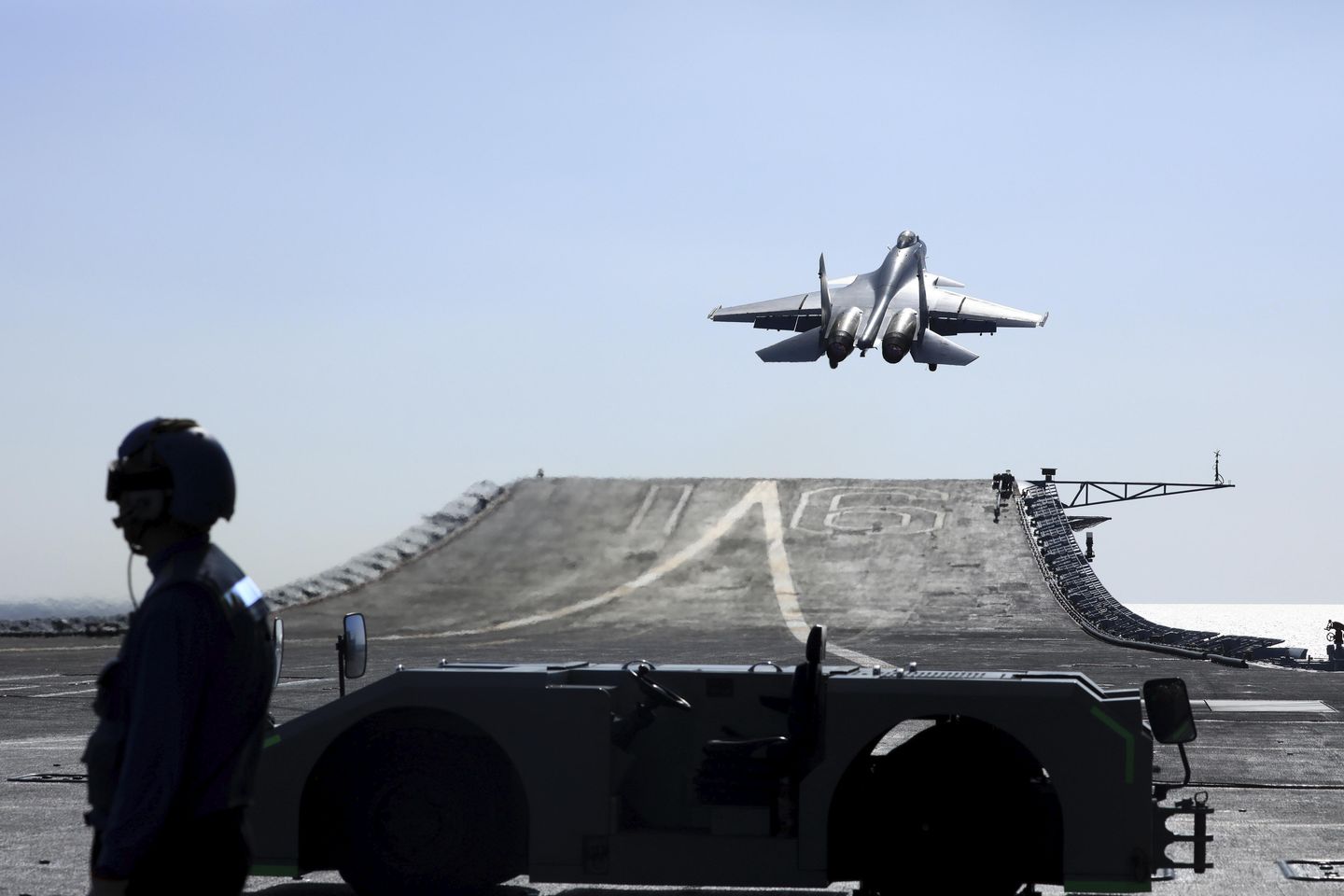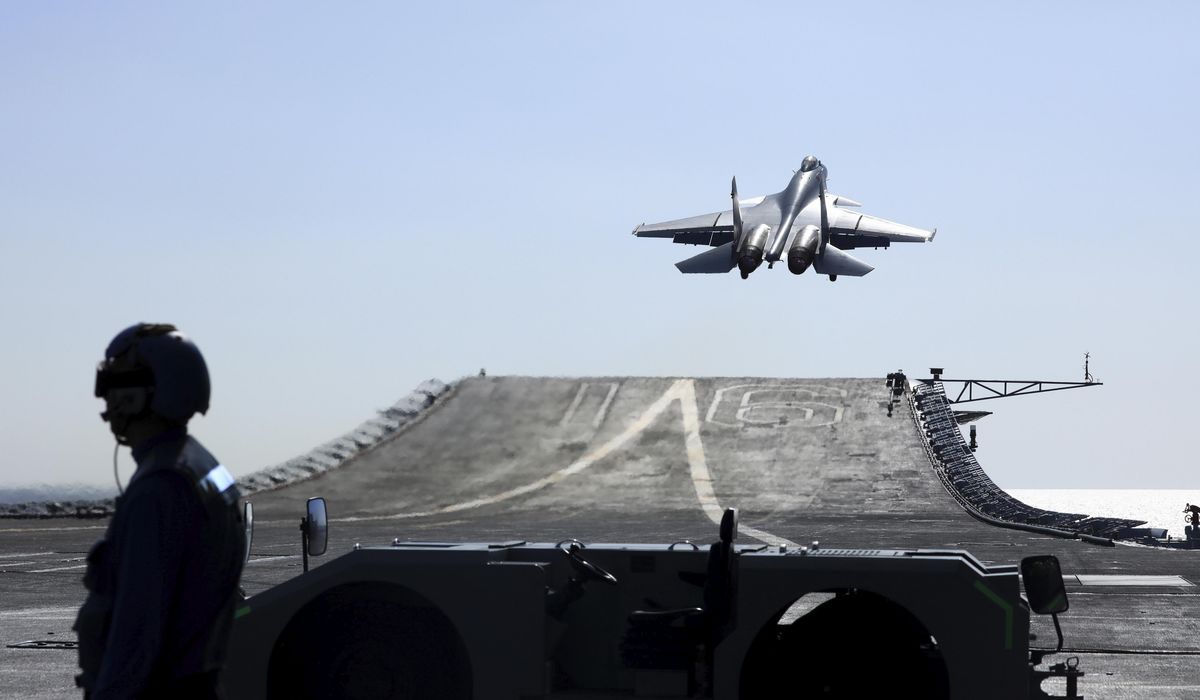

TAMPA, Florida — The increasingly futuristic nature of war in the 21st Century calls for a new generation of tools for the American military — from heat-sensing cameras that can detect enemy machine gun nests from miles away to cutting-edge inflatable boats that can be dropped from helicopters, and handheld underwater controllers capable of operating drones overhead.
U.S. officials say the particular risk that tension between the United States and China could one day explode into a military clash in the Pacific has expanded the need for more advanced, sea-based weapons and reconnaissance capabilities.
A major U.S. Special Operations conference in Tampa recently brought together military leaders and their defense industry allies, including companies from partner nations such as Australia that would find themselves on the front lines should such a clash erupt with the Chinese Communist Party’s war machine.
As China invests billions of dollars into building a military capable of squaring off against American forces, U.S. defense sector leaders are crafting new capabilities that would give the Pentagon an edge in any future battle.
Some of the most advanced tools are those being integrated into camera imaging systems aboard various war-fighting vehicles.
“The sensor can look so far we can look at the whole bridge. We can scan it with thermal and zoom in, and then if we do find a signature with someone on there…and see if they’re carrying a weapon or if they’re manning a machine gun station or something like that,” said Douglas Pillsbury, CEO of the tactical video solutions firm Aries Defense.
His company’s products, along with top-of-the-line digital imaging equipment crafted by the U.S. firm Teledyne FLIR, were outfitted on the groundbreaking Whiskey Project tactical watercraft, a prototype displayed in Tampa that was designed and built by battle-tested Australian Navy veterans and billed as the next stage in the evolution of the military boat.
“This enables us to take the surprise element out from the warfighter so they can see what they’re about to engage from distances far greater than our adversaries’ weapons can engage us,” Mr. Pillsbury told reporters as the Whiskey Project craft raced across Tampa Bay at speeds reaching 40 knots, all while onboard cameras and sensors captured stunningly clear video from the surrounding seas and shores.
“The idea for us is to sense first, see first, strike first,” Mr. Pillsbury said of the industry’s approach to a maritime conflict with a future adversary.
The Whiskey Project’s multi-mission reconnaissance boat is just one example of a new wave of maritime vehicles, weapons, equipment and cameras that are either already deployed or deep in development.
Industry sources say the U.S. and its key Indo-Pacific allies could rely heavily on such cutting-edge technology to combat China’s People’s Liberation Army (PLA) and its own growing arsenal of military capabilities if such a military clash were to emerge.
Inside the Pentagon, war planners have spent years preparing for such a conflict. Publicly, defense officials commonly refer to China as America’s “pacing challenge.” The term is a nod to the massive investments of time, money and resources that China has made in its own armed forces.
National security analysts say Beijing’s goal is either to compete militarily with U.S. armed forces or use its own military buildup for deterrence by appearing so powerful that Washington may be dissuaded from intervening should the PLA engage in any major offensive operation, such as a full-scale invasion of Taiwan.
China’s strategy centers on “anti-access and area denial” (A2/AD).
It’s an approach that relies on a combination of defensive systems, artillery, radar and other tools and is aimed at denying an enemy the ability to occupy or move through a specific area of land, air or sea.
For U.S. war planners, the possibility of battling China marks a major shift away from the strategies of the past two decades, during which American troops have focused mainly on land operations, counterterrorism and urban special operations missions in Afghanistan, Iraq and Africa.
The dynamics of conflict in the Pacific would be radically different, and U.S. forces would need to move rapidly through the sea to contest Chinese defenses.
“In the event of war, inside forces would exploit the region’s maritime geography to form an initial defensive barrier that could immediately challenge Chinese military operations,” Thomas G. Mahnken, a senior research professor at Johns Hopkins University’s School of Advanced International Studies, wrote in a recent analysis posted on the U.S. Naval Institute’s website.
“These forces would contest Chinese air superiority, sea control, and information dominance; delay and deny the ability of Chinese power projection forces to achieve their objectives, such as seizing the territory of U.S. allies or partners, while blocking China from projecting power beyond the First Island Chain; and degrade key Chinese systems to create gaps in A2/AD networks,” Mr. Mahnken wrote.
Tools of war
Unlike great-power wars of the past, a U.S.-China conflict wouldn’t see two massive armies battle on land. Instead, U.S. special operations capabilities at sea and in the air would be crucial, and could be the difference between victory and defeat.
Central components of American military strategy in any future war are communications systems, which could allow U.S. forces to share information across domains in real time. One such system is the MPU5, built by U.S.-based company Persistent Systems and billed as “the world’s first smart radio.”
“Imagine this as the internet without wires,” Jack Moore, the company’s vice president of business development, told The Washington Times on the sprawling convention center floor at the U.S. Special Operations conference in Tampa earlier this month.
“You can connect things to this — anything,” he said. “It’s way beyond a radio’s capacity.”
The radio looks relatively traditional, but it’s capable of handling multiple data sources from around the world, and is equipped with its own on-board Android computer system.
Paired with the company’s “Rugged Display and Controller” device, service members in the field would essentially have an internet’s worth of controls at their fingertips. The controller itself resembles a modern gaming console, making it easy to operate for today’s generation of warriors.
Divers could use it to control a drone overhead or another small craft, for example.
“You can dive it. You can jump it from 30,000 feet, or 20 meters underwater,” said Mr. Moore. “All of the data is here. But this is the common controller for you to have multiple robots, multiple sensors.”
“It’s very standardized, especially for the younger generation,” he said.
In a theoretical maritime campaign, small groups of U.S. personnel also would need to get to shore quickly and safely, putting a premium on a new generation of smaller, inflatable boats that can be inserted into a war theater either by submarine or by being lowered from a helicopter.
Jacob Heimbuch, vice president of government sales for the California-based company Wing Inflatables, said his firm’s cutting-edge “combat rubber raiding craft” provides that capability. Its V-bottom design, he said, allows for a much smoother ride and safer transport for whatever equipment the mission requires.
“It has a dead rise to it that allows for shock mitigation. It’s not like a standard boat,” he told The Times. “It cuts through the water instead of being flat.”
“No other boat has ever been able to take eight guys with their equipment, with fuel, to get in and out with this older technology,” Mr. Heimbuch said. “With this newer technology, you can fit everybody in the boat. You can get to where you’re going and you can get out with your full squad.”
Wing Inflatables was recently awarded a five-year Marine Corps contract to provide up to 900 boats, Mr. Heimbuch said.
Such high-dollar contracts for maritime capabilities will only increase moving forward. And leading Pentagon officials readily admit that their approach needs to keep evolving.
“There’s some things as we modernize that we’ve done over the last 20 years that quite frankly need a bit of a refresh,” Jim Smith, acquisition executive at U.S. Special Operations Command, told an audience at the Special Operations convention.
